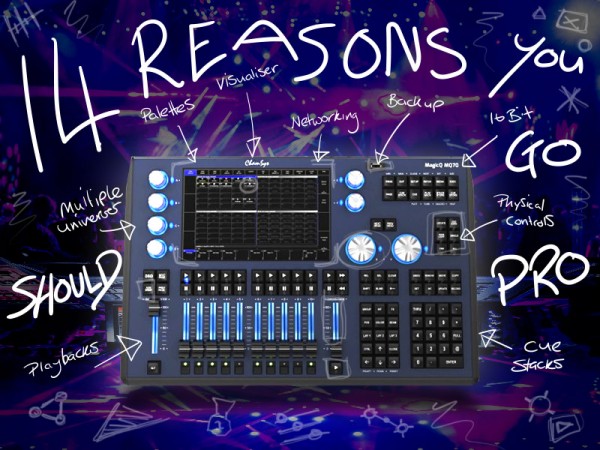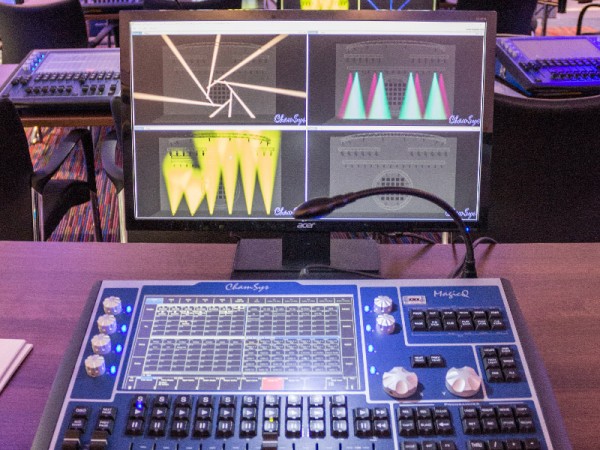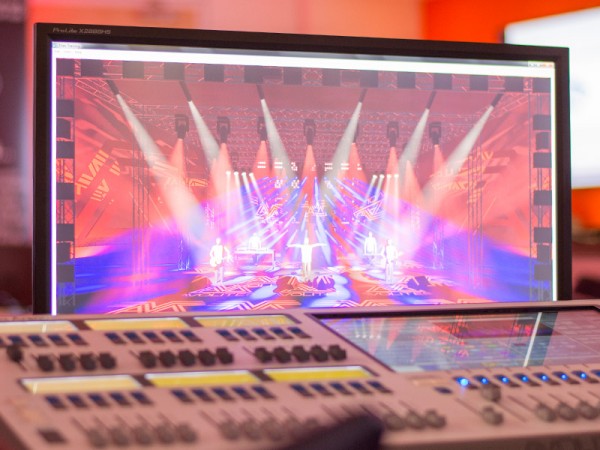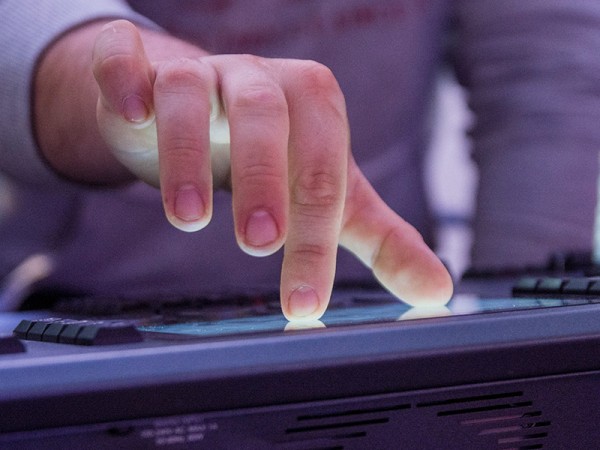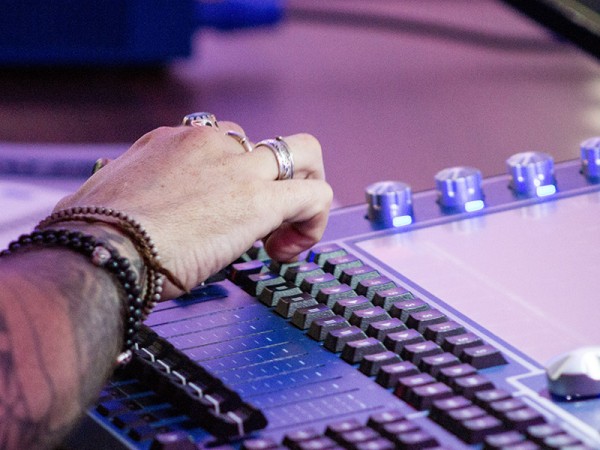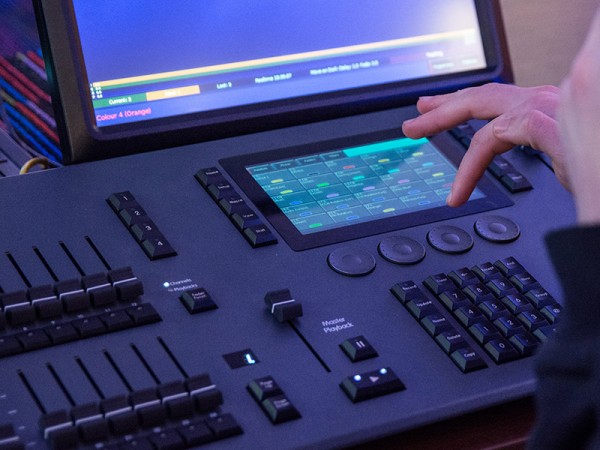14 Reasons You Need a Pro Lighting Desk in Your Hire Stock
Posted on: 5th August 2021
Entertainment lighting can be as simple or as complex as you like.
Back in the bad old days, when your only option was analogue dimming, unintelligent fixtures and tungsten lamps, creating intricate show lighting was simple, but inefficient, time consuming and hard to precisely repeat. Want a different colour; gobo; position? In most cases, be prepared to get up a ladder and burn your fingers. These days however, with most production houses switching to LED fixtures and digital consoles, creating complex, flexible and repeatable show lighting is simpler than ever.
If you’re in the market for a lighting controller you’ll be spoilt for choice. However, there’s a world of difference between a basic DMX controller and a professional show console. Brands such as ChamSys, Zero 88, ETC and Avolites have pioneered lighting control technology, working to streamline workflows for lighting designers and provide invaluable tools for technicians.
While most professional consoles are designed to stand apart with unique physical designs and trademark software features, there are some universal (see what we did there?) features that make a pro desk a must have for events and temporary installation hire. We’ve put together our 14 favourite reasons to invest in a professional lighting desk for your hire stock:
1 - Touch & tactile controls
Professional consoles are all laid out differently, but more often than not, they will come with a combination of tactile knobs, buttons and faders as well as a touchscreen for flexible and precise programming and control.
2 - Group stages
Control, locate and edit multiple fixtures at once by grouping them into pre-defined segments. Fixtures can be added to multiple groups at once allowing to you segment specific models and stage locations at the same time.
3 - Palette picks
Palettes store presets for colours, gobos, zoom, intensity and position information, allowing you to quickly update individual fixtures or groups onsite, which in turn updates the relevant cues you recorded. This saves a lot of time when it comes to last minute changes.
4 - Visualise your show
Need to work on a show off site? Whether you’re programming on a compact console with no screen or full size work horse, professional consoles come with a built in visualiser which displays your show without having physical lights attached. For consoles without screens, an external monitor can be used as a visualiser.
5 - Pre-programming – scenes, playbacks, cues
Once you’ve set your scene, you can record all the lighting information to a playback fader which can be recalled at any time. Playbacks or scenes can also be added into a cue or cue stack depending on the console you are using. Pre-programming your showfile ahead of time allows you spend more time perfecting the show and allows more time on site to troubleshoot if required.
6 - Program, save, repeat
Once you’ve designed your show the console will remember all your settings when you next boot up the desk. But what if you want to work on another show or create a backup or a copy to use on a second console elsewhere? Professional desks will let you save and load pre-programed shows from a USB drive.
7 - Networking & backup
Some consoles will allow you to master/slave with a second console the background creating a redundancy in case your main console goes down during a show. You can also network multiple consoles together to enable multiple show programming to take place saving on time when working on large projects.
8 - Precise 16-bit control
Most basic fixtures, desks and dimmers work in 8-bit mode, giving each channel of DMX 256 steps of control over movement, colour or intensity. This may sound like a lot but with LED lighting and moving head fixtures, it can result in uneven movement or dimming curves. With a 16-bit enabled console 2 DMX channels are used, inserting 256 steps from channel 1 in between each step from channel 2 giving you 256 x 256 steps of control (65,536 total) resulting in far gentler transitions.
9 - Multiple universes
Each universe has up to 512 control channels. Professional consoles often come with more than one universe giving you more room to grow and control your rig depending on the project.
10 - Choose your weapon
There’s a huge range of lighting consoles out there with tools and features to suit a variety of skill levels and budgets. This can range from the size of the console, the layout, number of screens and screen size as well as number of universes to cater for the scale of events you offer.
11 - Grow your skills
Investing in a lighting console gives you the opportunity to grow your business and your programming skills. Hire yourself and your console out to customers and increase the services you offer.
12 - Make it your own
Depending on the brand of console, you can build showfiles and adjust the console’s software to make it your own, with certain features tailored to your programming style. You can also program it for a different operator or specific event with some consoles offering security features which password lock part or all of the desk.
13 - Continuous software upgrades
Most console manufacturers release regular software updates new features, optimisations and bug fixes giving you the opportunity to continue expanding your lighting design skills and knowledge.
14 - Community support
As well as being part of a community or lighting folk who support one another, there is always support and help from lighting console manufacturers, which will inevitably come in handy when you’re in a pickle and require some assistance.
